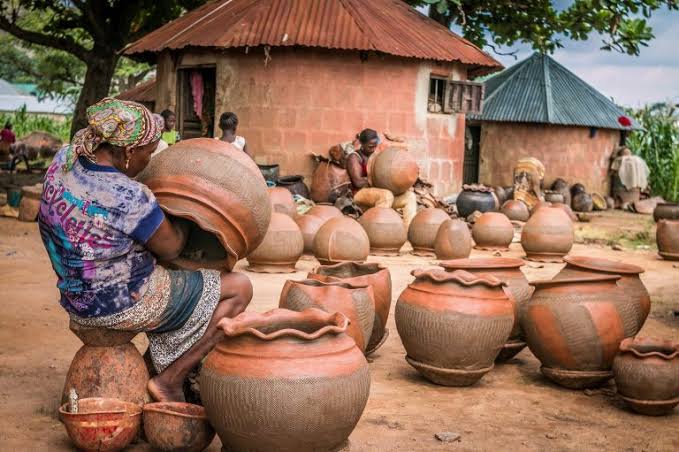
Ushafa Cultural Pottery Centre
Pottery is an ancient craft in Nigeria, and it is still practiced in most parts of the country today. Pottery centres like the Ushafa Cultural Pottery Centre have greatly helped in promoting and putting Nigeria on the world tourism map.
The Ushafa Cultural Pottery Centre, known over the years for its unique art is located in Ushafa community in Bwari Area Council of the Federal Capital Territory, Nigeria.
This centre was established in 1990 by a former First Lady of Nigeria, Maryam Babangida, in her bid to harness the potentials of the community under the Better Life for Rural Women programme at that time.
Since inception, the pottery centre has encouraged and supported entrepreneurship among women from various villages in Ushafa; whose works have drawn the attention of both international and local tourists to Nigeria.
Read Also: Seven importance of palm trees in Nigeria
Each hut in this centre is made up of five women from each village in the community (Ushafa), who have been trained to produce pots and other clay products. The centre employs both local and modern methods of producing pots and other art works.
For the local production, the women smash and mix the clay manually. After mixing the clay thoroughly, they collect the quantity of clay they need and mould. There is usually no scale for measurement, whatever they do is based on their discretion.
After moulding, they scoop the inside and then shine the edge of the pot with stones. They also make different designs on the pots using local tools.
When this is done, they keep it under the sun to dry. When they have gathered about 30 to 40 pots, they take it to the field for firing; which is done for about two hours with firewood and dry grass. The firing is a solidification process, it prevents the clay from melting when water is poured inside it.
Immediately after the firing, colouring is done with “makuba”. Makuba is the husk of locust beans. The husk is soaked in water and the hot pot from firing is dipped inside the mixture to colour the pot. After colouring, the pot is left to dry and then, it’s ready for use. The same process applies in the production of local plates and jugs.
In the modern method of pottery, both the clay and kaolin are measured and soaked in water to ferment for three days, after which the mixture is sieved through a mesh.
The filtrate is left for some days to get ready for use, after which the desired quantity for a particular project is weighed. The filtrate undergoes a lot of processes to ensure the clay is fine, smooth and lump-free, as any lump in the clay leads to difficulties moulding with the wheel.
After moulding on the wheel, the art work is air-dried and coloured, then it is taken to the keel for firing. The firing has the same function as in the local method of production.
This is the same method of producing ceramics. Flower vases, planters, different shapes of ornaments, ceramic plates and mugs are all produced in the Ushafa Cultural Pottery Centre.
People order thousands of locally made pots till date for sales locally and internationally. These local pots are historical and portray our cultural identity. Some people still cook and store water in these pots following the belief that eating from the locally made pots and plates is medicinal.
Do you still make use of locally made pots and plates?
